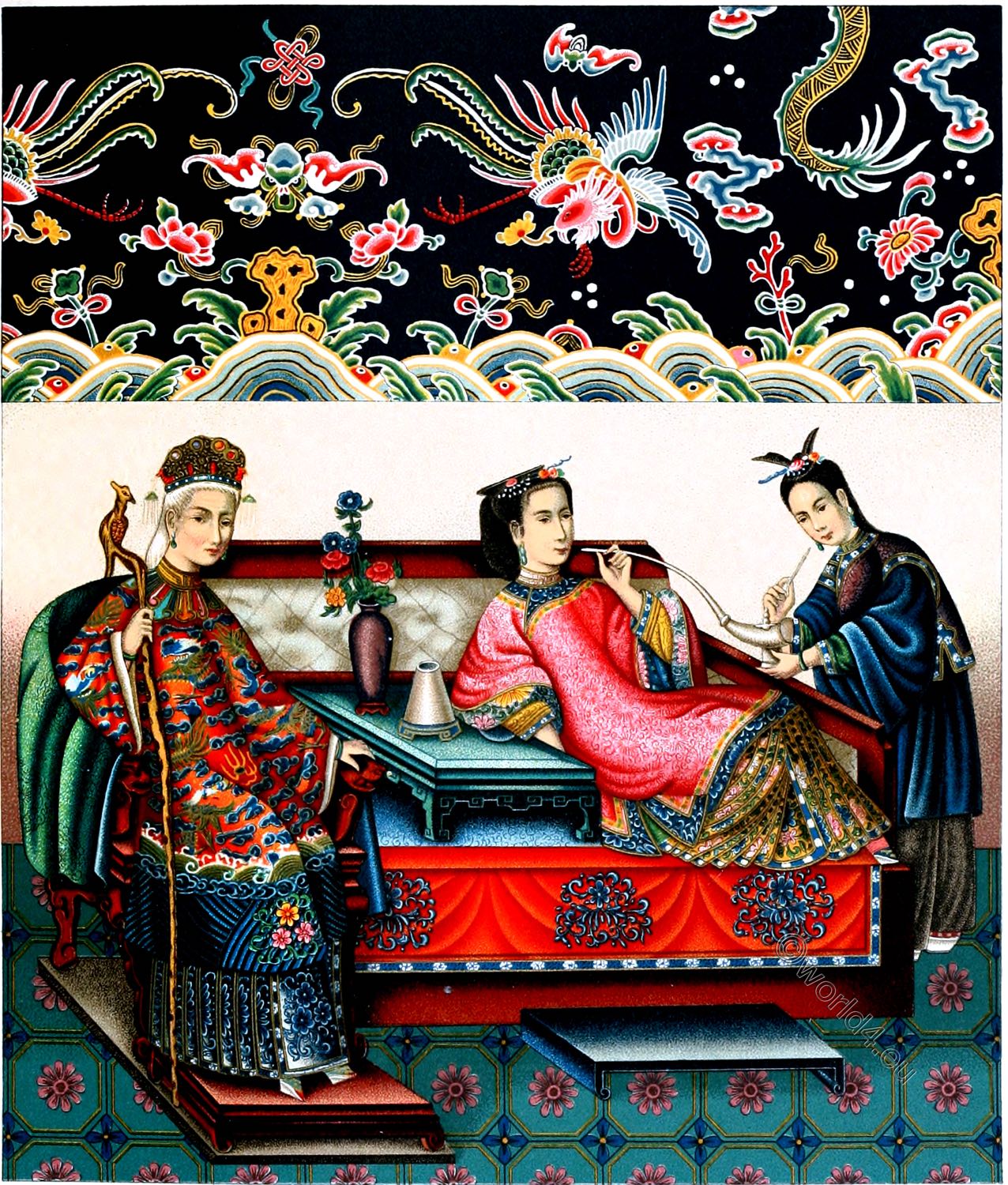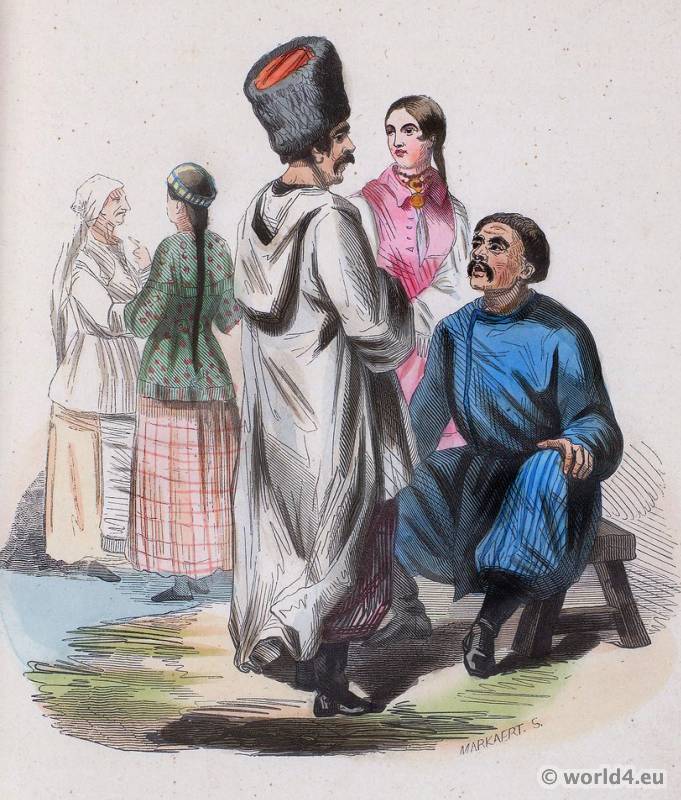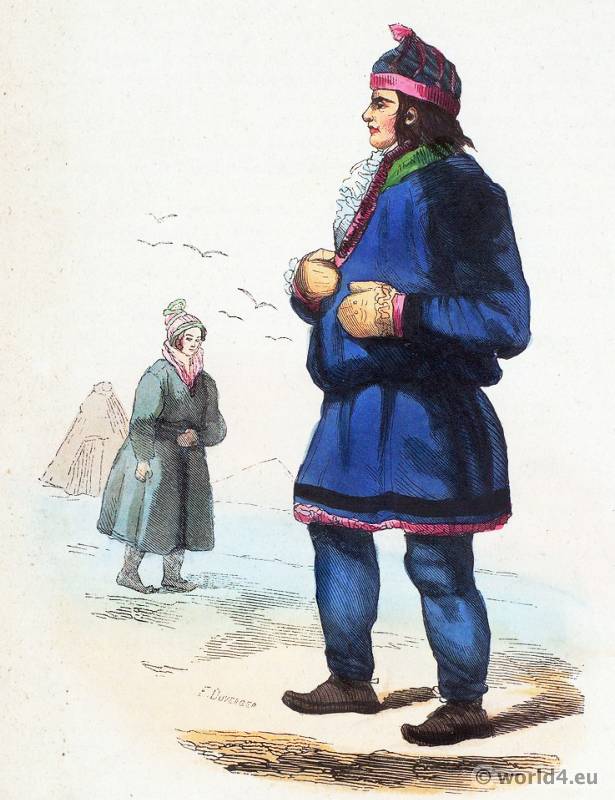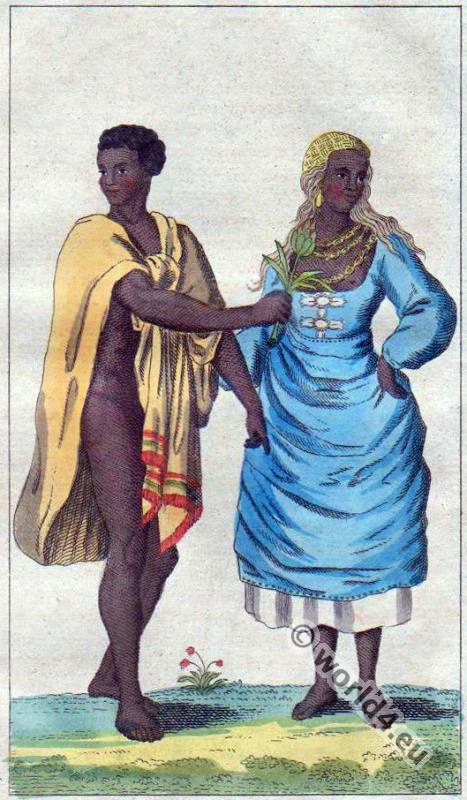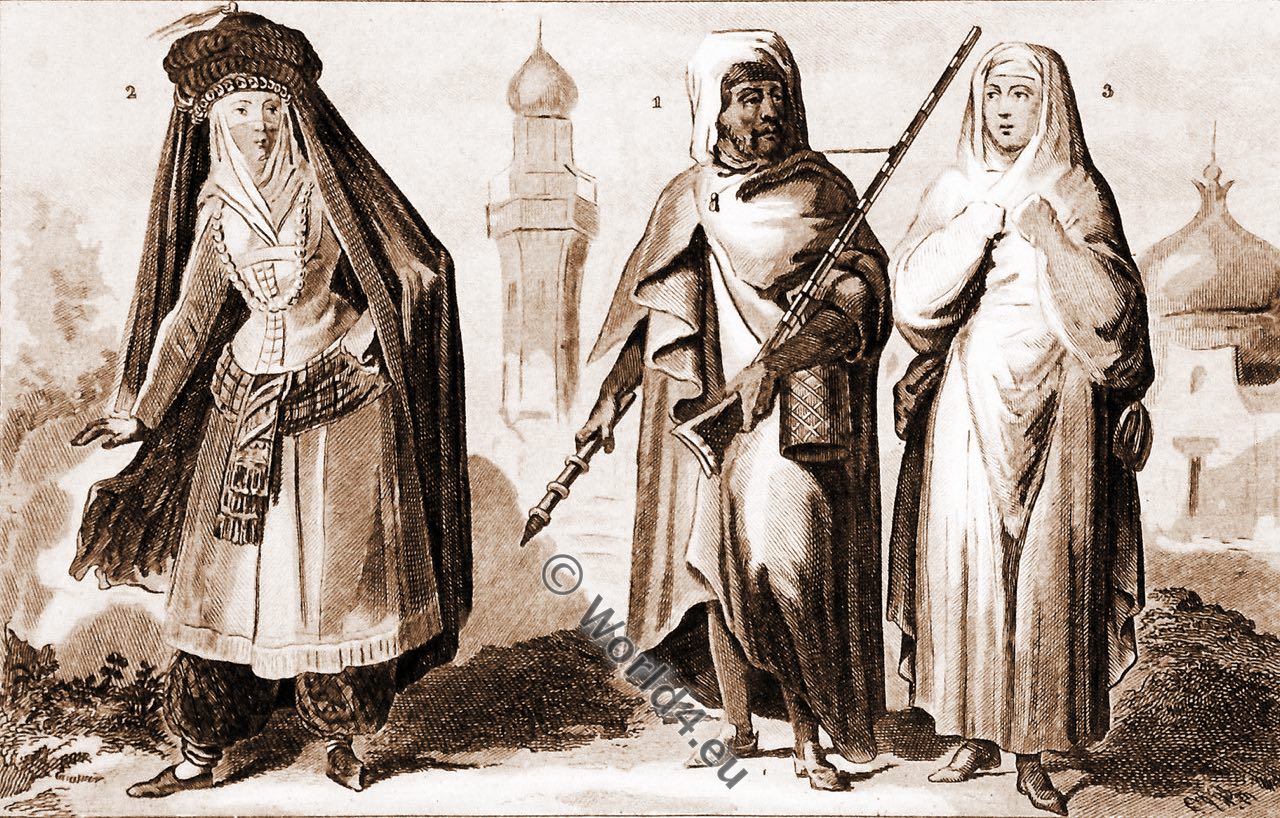Xiamen is a port city on the southeast coast of China, which is separated from Taiwan by a strait and extends over 2 main islands and a region on the mainland. Between 1842 and 1912 the city, formerly called Amoy, was an open port for the British.
Amoy (Xiamen), Fukien province, China.
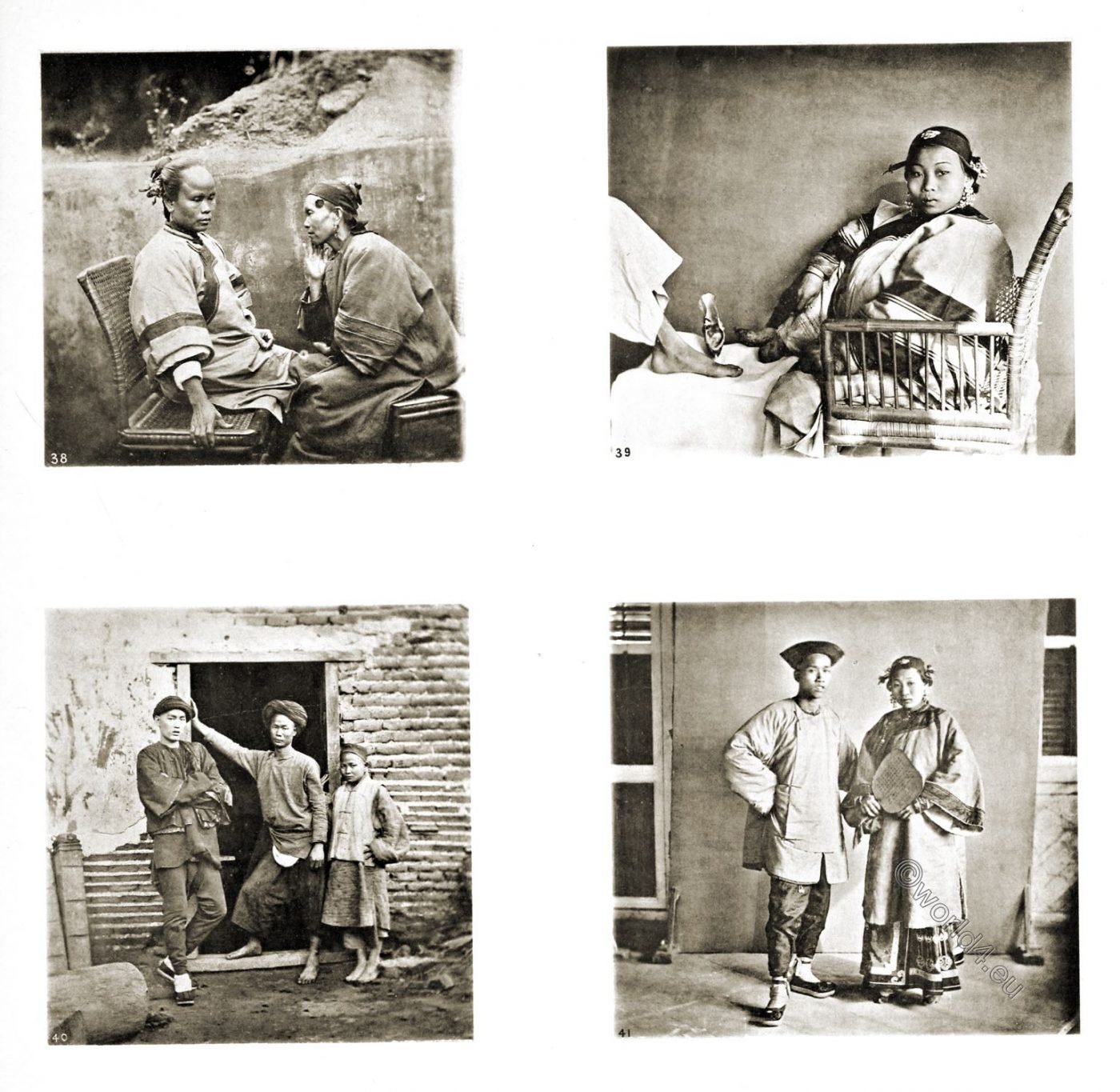
Photograph by John Thomson, 1869.
38 – Amoy Women.
39 – The Small Foot of a Chinese Lady. Bound and unbound feet of two Amoy women.
40 – Amoy Men.
41 – Male and Female Costume, Amoy.
Amoy Women.
MANY are the old women whom I have seen, and many are the nationalities to which they have belonged; but, in justice to them all, I feel bound to admit that I have not found one who does not possess the little “tache” of nature which makes them akin -a predilection, that is, for sitting and talking about their neighbours’ affairs, and for gossiping over the tittle-tattle of the place where they reside.
The two old women of my illustration proved no exception to the rule. I fell in with them as they stood in confabulation, and suggested that they would find it easier if they were to sit down to their work. At the time I arrived the elder of the two-she with the black patch on her temple-was recounting the hours of suffering caused her by an acute headache, and how the physician had effected a cure by applying a small round piece of black plaister. This, when removed, she would stick dutifully upon the doctor’s door as a proof of its efficacy in alleviating pain. Her companion is employed by foreigners to nurse their children; she is a woman of a kindly nature, who does her own duty well, but carefully abstains from putting her hand to extraneous work, or drudgery of any kind.
To her mistress she is cheerful, civil, and obedient; but her vocabulary to the children under her charge is not always the most select; indeed, she has a ready knack of showing her displeasure, by a free use of vile epithets which their fond mother is fortunately unable to understand. The pay of a good nurse in China is about £24 a year, out of which sum she has to find herself in food. See No. 38.
SMALL FEET OF CHINESE LADIES.
THIS picture No. 39, shows us the compressed foot of a Chinese lady, and I regard it as one of the most interesting in my collection. Who the lady is, or where she came from, I cannot say. I had been assured by Chinamen that it would be impossible for me, by the offer of any sum of money, to get a Chinese woman to unbandage her foot, and yet gold and silver are arguments in favour of concessions which operate in the Celestial Empire with more than usual force.
Accordingly, all my efforts failed until I reached Amoy, and there, with the aid of a liberal-minded Chinaman, I at last got this lady privately conveyed to me, in order that her foot might he photographed. She came escorted by an old woman, whom also I had to bribe handsomely before she would agree to countenance an act of such gross indecency as the unbandaging the foot of her charge. And yet, had I been able, I would rather have avoided the spectacle, for the compressed foot, which is figuratively supposed to represent a lily, has a very different appearance and odour from that most beautiful and sacred of flowers.
Nothing would persuade the lady to raise her dress just high enough to show her ankles. The process of compressing the foot begins in early childhood; the bones of the instep being gradually bent down by continual bandages till they meet the heel in such a manner that the smaller toes almost disappear and become entirely useless. The cripple is thus reduced to supporting herself on the great toe and the ball of the heel. Dr. Dudgeon says, “The os cakis from being horizontal becomes vertical, and its posterior surface is brought to the ground. The bones of the instep are pushed out of their place and made to bulge, thus giving a great prominence. and an arched crescentic form, resembling the new moon, to that part.” The points, then, upon which the foot rests, are the heel in its new position, the ball of the great toe, and the fourth and fifth toes, whose upper surfaces
Source:
- Illustrations of China and its people: a series of two hundred photographs, with letterpress descriptive of the places and people represented by John Thomson. London: Sampson Low, Marston, Low, and Searle 1873.
- Through China with a camera by John Thomson. London; New York: Harper, 1899.
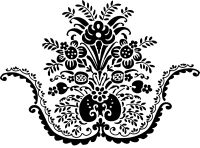
Related
Discover more from World4 Costume Culture History
Subscribe to get the latest posts sent to your email.


